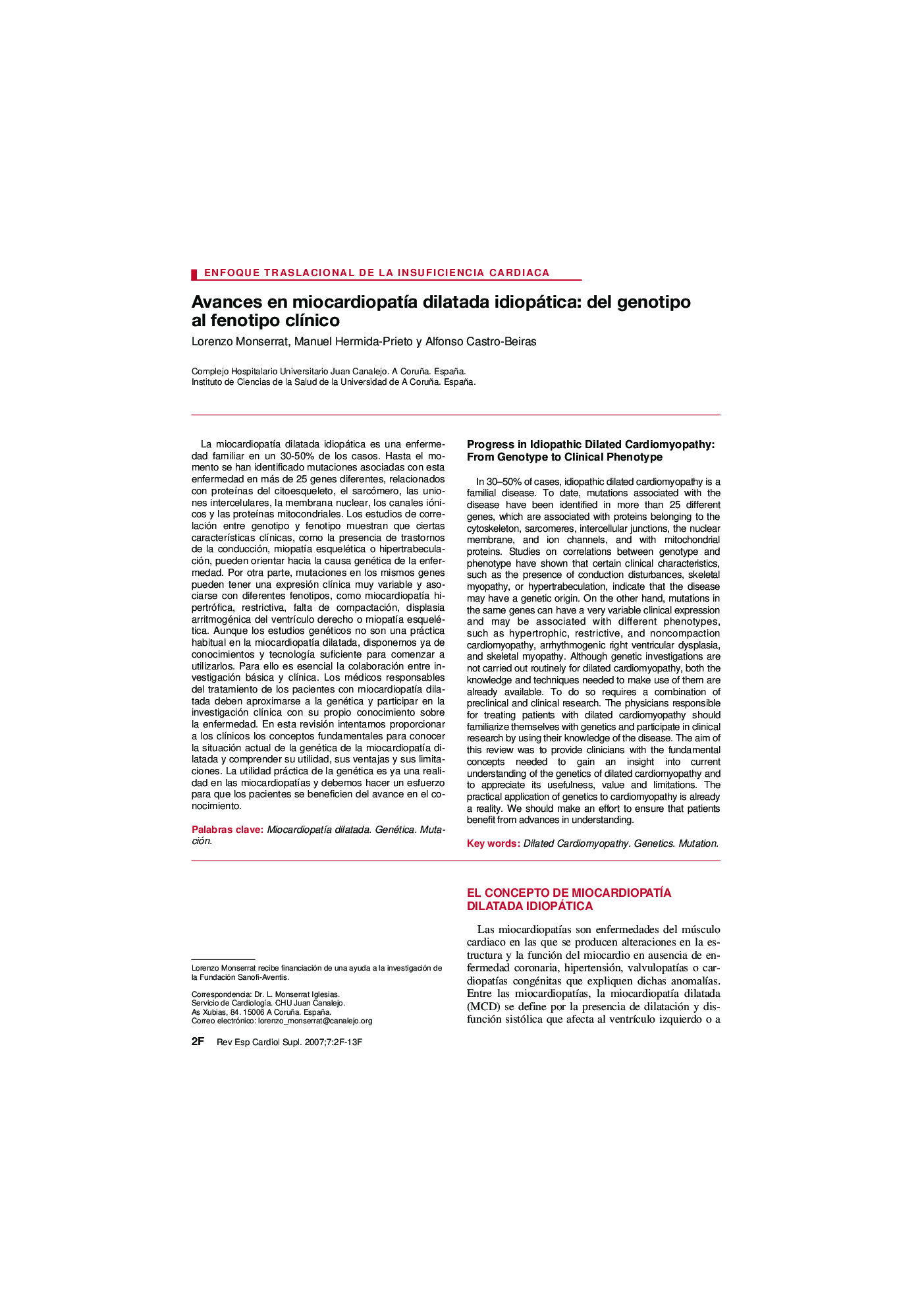| Article ID | Journal | Published Year | Pages | File Type |
|---|---|---|---|---|
| 3019641 | Revista Española de Cardiología Suplementos | 2007 | 12 Pages |
Abstract
In 30-50% of cases, idiopathic dilated cardiomyopathy is a familial disease. To date, mutations associated with the disease have been identified in more than 25 different genes, which are associated with proteins belonging to the cytoskeleton, sarcomeres, intercellular junctions, the nuclear membrane, and ion channels, and with mitochondrial proteins. Studies on correlations between genotype and phenotype have shown that certain clinical characteristics, such as the presence of conduction disturbances, skeletal myopathy, or hypertrabeculation, indicate that the disease may have a genetic origin. On the other hand, mutations in the same genes can have a very variable clinical expression and may be associated with different phenotypes, such as hypertrophic, restrictive, and noncompaction cardiomyopathy, arrhythmogenic right ventricular dysplasia, and skeletal myopathy. Although genetic investigations are not carried out routinely for dilated cardiomyopathy, both the knowledge and techniques needed to make use of them are already available. To do so requires a combination of preclinical and clinical research. The physicians responsible for treating patients with dilated cardiomyopathy should familiarize themselves with genetics and participate in clinical research by using their knowledge of the disease. The aim of this review was to provide clinicians with the fundamental concepts needed to gain an insight into current understanding of the genetics of dilated cardiomyopathy and to appreciate its usefulness, value and limitations. The practical application of genetics to cardiomyopathy is already a reality. We should make an effort to ensure that patients benefit from advances in understanding.
Keywords
Related Topics
Health Sciences
Medicine and Dentistry
Cardiology and Cardiovascular Medicine
Authors
Lorenzo Monserrat, Manuel Hermida-Prieto, Alfonso Castro-Beiras,
